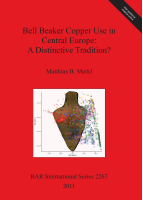Description
BOOK DESCRIPTION
After defining the framework of this study, describing the archaeological evidence for metallurgy dating from the emergence of the first copper finds (c. 4500 BC) to the establishment of tin/bronze technology in central Europe, this book provides an overview of the projects that provided the trace element analyses for this research. The database of this study has been assembled, according to several criteria, from those projects which have compiled c. 35 000 trace element analyses of copper and bronze objects from all over the 'Old World'. Various criteria, such as the location and date of each analysed object, must be confirmed by literature, so that a trace element analysis can be added to the database of this study. The database is provided in the catalogue as a CD-Rom, which includes some of the output, graphs and diagrams resulting from the statistics. A further chapter ascertains the impact of both ore formation and the technical processes of early copper metallurgy, such as smelting and casting, on the trace element composition of copper objects. Apart from the metallurgical literature, this study also refers to archaeometallurgical studies that have investigated the properties of prehistoric copper artefacts. Following the discussion of the possible effects of impurities on copper and their importance for the prehistoric metallurgist, the database of trace element analyses is investigated in respect of the research questions. A subsequent chapter further explores the method discussed and the statistical evaluation and results are presented.











